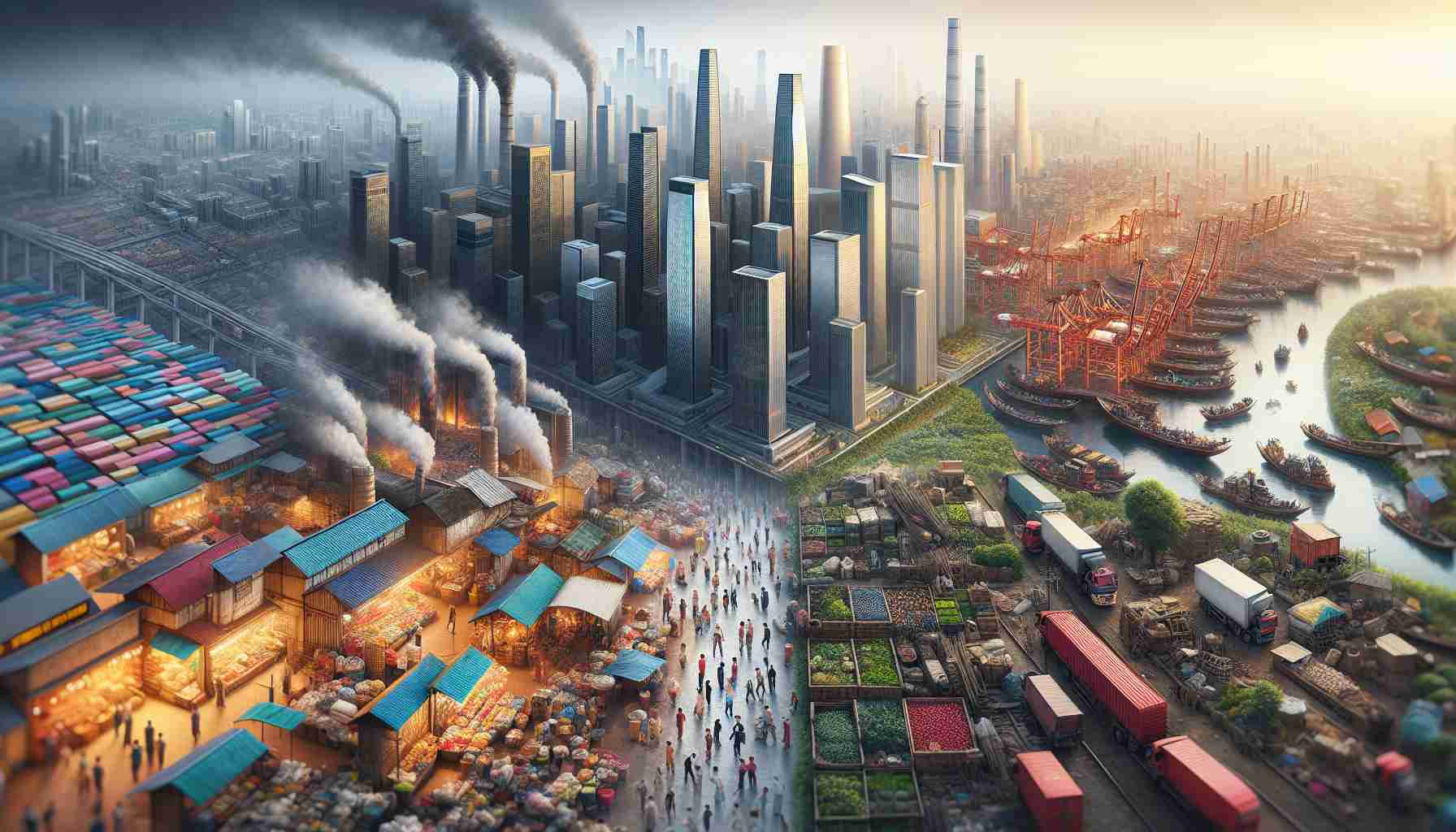China’s latest economic figures reflect a mix of positive and negative trends. While the country exceeded market expectations with a 4.6% year-on-year growth in the third quarter, it also marks the slowest growth in six semesters for the world’s second-largest economy. This slowdown is attributed to weak domestic demand and a struggling real estate sector.
Despite signs of improvement in industrial production and retail sales, highlighted by a significant increase in September, challenges persist. Luxury goods sales, including jewelry and cosmetics, continue to decline, signaling underlying issues in consumer spending patterns.
Export growth, a key driver of China’s economy, unexpectedly slowed in September, raising concerns about the sustainability of growth momentum. The government’s ambitious growth targets further underscore the need for strategic interventions to stabilize the economy.
To counter these challenges, China recently announced stimulus measures, including fiscal support for local governments and a series of monetary policy adjustments by the People’s Bank of China. These initiatives aim to boost consumer spending and revitalize internal demand.
Market analysts cautiously predict a gradual economic recovery, buoyed by increased fiscal spending and targeted investments. However, the window for substantial growth impetus narrows as winter approaches, underscoring the urgency for sustained policy interventions.
As China navigates its economic landscape, balancing growth objectives with structural reforms remains imperative to ensure long-term stability and resilience in the face of evolving global economic dynamics.
China’s Economic Growth Outlook: Unveiling Additional Insights
Amidst the intricate tapestry of China’s economic landscape, several key questions emerge that shed light on the nation’s growth trajectory and challenges ahead.
What impact does the demographic shift in China have on economic growth?
China’s aging population poses a significant challenge to sustained economic growth. With a large proportion of elderly citizens, the country faces pressure on its pension and healthcare systems, potentially dampening consumer spending and productivity levels in the long term.
How are technological advancements influencing China’s economic growth?
China’s rapid advancement in technological innovation, particularly in areas such as artificial intelligence and e-commerce, has bolstered economic growth. However, concerns regarding intellectual property rights, cybersecurity, and regulatory challenges loom large, raising questions about the sustainability of this growth trajectory.
What role does environmental sustainability play in shaping China’s economic future?
As China seeks to transition towards a greener economy, initiatives aimed at environmental protection and sustainable development are gaining prominence. Balancing economic growth with environmental concerns presents a complex challenge, necessitating a delicate equilibrium between growth objectives and ecological preservation.
Key Challenges and Controversies:
Debt Sustainability: China’s escalating debt levels, particularly in local government financing platforms and state-owned enterprises, pose a significant risk to economic stability. Addressing concerns around debt sustainability while maintaining growth momentum remains a critical challenge for policymakers.
Trade Disputes: Ongoing trade tensions with key global partners, most notably the United States, have the potential to disrupt China’s export-oriented economy. Navigating trade disputes and fostering resilient trade relationships amid geopolitical uncertainties are paramount for sustainable growth.
Advantages and Disadvantages:
Advantages:
– China’s diversified economy, spanning from manufacturing to services, offers resilience against sector-specific shocks.
– Strategic government interventions, such as stimulus measures and targeted investments, provide a buffer against economic headwinds.
Disadvantages:
– Structural imbalances, including overreliance on exports and investment-driven growth, pose risks to long-term sustainability.
– Socioeconomic disparities and unequal regional development patterns hinder inclusive growth and pose challenges to social stability.
For further insights on China’s economic growth and associated challenges, refer to the official website of the China Daily. This reputable source offers comprehensive coverage of economic developments and policy initiatives shaping China’s economic landscape.
Stay informed, stay engaged, and navigate the complexities of China’s economic growth with a nuanced understanding of the evolving dynamics.
